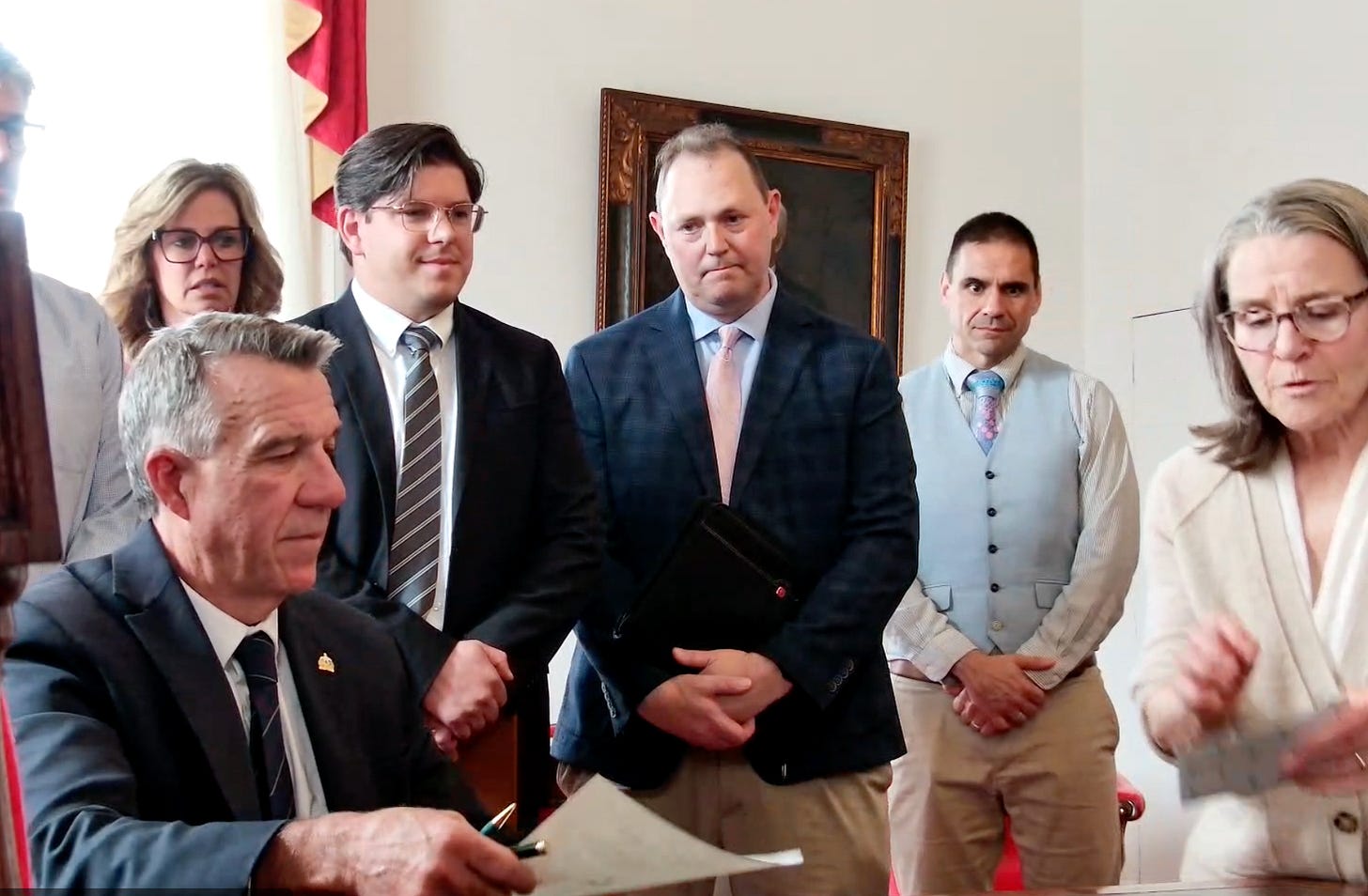Governor Scott Signs Executive Order to Tackle Vermont's Housing Shortage
The order focuses on relieving "long and expensive permitting and appeals, and energy standards that are unaffordable" as the primary obstacles.
MONTPELIER, VT – Citing an urgent need for 40,000 new homes over the next five years, Governor Phil Scott signed an executive order on Wednesday, September 17, 2025, to overhaul state regulations he argues have slowed and increased the cost of housing construction. The order, which takes effect immediately, aims to bypass legislative gridlock by providing flexibility on energy codes, streamlining wetlands permitting, and expediting the entire housing development process.
"We have to start somewhere to get Vermont back on a better path. I believe housing is part of the answer," Governor Scott stated at the press conference, according to a provided transcript. He identified "long and expensive permitting and appeals, and energy standards that are unaffordable" as the primary obstacles.
Citing Urgency, Governor Bypasses Legislature
The Governor explained his decision to use executive action was driven by the immediacy of the crisis and a lack of sufficient progress during the legislative session. He pointed specifically to Act 181, passed in 2024 over his veto, which he said "expanded Act 250 Regulation on Development across the state" and provided only limited relief.
"Even if we wait for the legislature in January, it's going to be months before anything's passed," Scott said. "We need relief right now."
Administration officials emphasized that the executive order utilizes powers within the executive branch and does not require new laws. "This executive order is an intent to pull the levers that we have control over in state government," said a commissioner identified as Commissioner Farrell in the official transcript.
Key Changes in the Executive Order
The multifaceted order introduces several significant changes to state policy, effective until July 31, 2027.
Energy Code Flexibility
Perhaps the most significant cost-saving measure is a change to the Residential Building Energy Standard (RBES). The order allows builders to comply with the 2020 energy standards instead of the more stringent and costly 2024 standards. Compliance with the 2024 code is now voluntary.
Jason Webster of Huntington Homes, a home builder present at the conference, quantified the impact. "The 2024 energy code added $12,000 to the average home over the 2020 code, and $26,000 over the 2015 code," Webster stated. He explained that the newer code required upgrades that many clients viewed as "luxury items," such as complex ventilation systems and drain water heat recovery systems, which drove up the upfront "sticker price" of a new home.
Streamlined Wetlands Permitting
To allow for more housing density in designated growth areas, the order modifies the state's wetlands permitting process.
Mapping: State wetland permits will only be required for Class 2 wetlands that are explicitly identified on current Vermont Significant Wetlands Inventory (VSWI) maps.
Buffer Zones: Protective buffer zones around these mapped Class 2 wetlands will be reduced from 50 feet to 25 feet in designated growth areas.
Colin Frisbee of Sterling Homes noted this change will "allow for more comfortable density in the areas the state is working to encourage housing."
Faster Permitting and Fee Relief
The order mandates a system-wide prioritization of housing projects.
Priority Processing: All state agencies must prioritize permit applications for housing and shelter development above all other applications.
Expedited Timelines: The order imposes shortened review timelines. If an agency exceeds the formal timeline for a housing application, the permit will receive "default approval."
Fee Relief: Permit fees can be reduced or deferred until a project is completed, easing the upfront financial burden on builders.
New Task Force and Other Measures
The executive order also establishes a new Governor’s Housing Task Force charged with developing a comprehensive permit modernization plan. It further directs the state to inventory all state-owned land and analyze its feasibility for housing development. Finally, it requests that the Vermont Judiciary prioritize and expedite appeals related to residential housing projects to prevent them from languishing in the court system.
Support from Vermont Home Builders
Builders invited to the press conference voiced strong support for the executive actions, highlighting the practical, on-the-ground benefits.
"This executive order gives Vermonters more choices on how they want to spend their own hard-earned dollars," said Jason Webster of Huntington Homes, referencing the energy code flexibility.
Colin Frisbee of Sterling Homes emphasized the value of predictability. "Having clear timelines and regulatory certainty increases our predictability and speeds the overall process of development," he said, calling the order a "win-win scenario."
What Happens Next
The executive order is now in effect and will remain so until July 31, 2027, unless otherwise modified.
The Governor's new housing task force will begin its work to develop a longer-term permit modernization plan.
While these actions are significant, administration officials were clear that they do not solve the entire problem. Commissioner Farrell stated, "These don't diminish the substantial need for further legislative action... We still need significant action from the legislature." The Governor expressed hope that when lawmakers reconvene, they will see the positive effects of these measures and be inspired to "maybe adopt" them into permanent law.




Finally! Thank you Governor Scott for getting the ball rolling! If you either waited those liberals or need people to take over, it would be too late. Now the builders will hire some young guys from the Tech centers and start building!